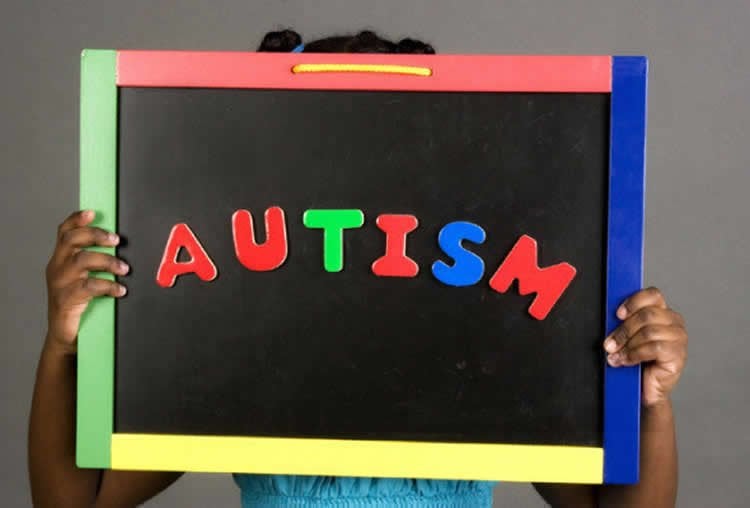Summary: A new study demonstrates astrocytes play a role in certain subtypes of autism spectrum disorder.
Source: UCSD.
Modeling the interplay between neurons and astrocytes derived from children with Autism Spectrum Disorder (ASD), researchers at University of California San Diego School of Medicine, with colleagues in Brazil, say innate inflammation in the latter appears to contribute to neuronal dysfunction in at least some forms of the disease.
The findings, published in the current issue of Biological Psychiatry, are the first to demonstrate that supporting brain cells, called astrocytes, may play a role in some subtypes of ASD. But more importantly, the research, using induced pluripotent stem cells, suggests the neuronal damage might be reversible through novel anti-inflammatory therapies.
To conduct the study, scientists took dental pulp cells from donated baby teeth of three children with diagnoses of non-syndromic autism (part of the on-going “Tooth Fairy Project”) and reprogrammed the cells to become either neurons or astrocytes, a type of glia or support cell abundantly found in the brain. The cells were grown into organoids, essentially mini-brains in a dish.
Though genetically distinct, all three children displayed stereotypical ASD behaviors, such as lack of verbal skills or social interaction. When researchers examined the developed organoids in microscopic detail, they noted that the neurons had fewer synapses (connections to other neurons) and other network defects. Additionally, some astrocytes showed high levels of interleukin 6 (IL-6), a pro-inflammatory protein. High levels of IL-6 are toxic to neurons.

The researchers co-cultured astrocytes derived from the ASD children with neurons derived from normal controls. The healthy neurons behaved like ASD neurons, said co-senior author Alysson R. Muotri, PhD, professor in the UC San Diego School of Medicine departments of Pediatrics and Cellular and Molecular Medicine, director of the UC San Diego Stem Cell Program and a member of the Sanford Consortium for Regenerative Medicine.
“But more importantly, the opposite was true. When we co-cultured ASD neurons with normal astrocytes, we could rescue the cellular defects. The neurons reverted to normal functioning and behavior.”
Muotri and colleagues say the data suggests there may be an intrinsic inflammatory reaction within a subgroup of persons with ASD. “What we are trying to do now is understand if we can predict this subgroup through genome sequencing and, perhaps, find a therapeutic opportunity to treat them with anti-inflammatory drugs.”
Funding: Funding provided by California Institute for Regenerative Medicine, National Institutes of Health, Brain & Behavior Research Foundation.
Disclosure: Alysson Muotri is a co-founder and has equity interest in TISMOO, a company dedicated to genomic analysis and brain organoids focusing on therapeutic applications for Autism Spectrum Disorder and other neurological disorders. The terms of this arrangement have been reviewed and approved by the University of California San Diego in accordance with its conflict of interest policies.
Source: Scott LaFee – UCSD
Publisher: Content organized by NeuroscienceNews.com.
Image Source: NeuroscienceNews.com image is adapted from the UCSD news release.
Original Research: Abstract for “Modeling the interplay between neurons and astrocytes in autism using human induced pluripotent stem cells” by Fabiele Baldino Russo, Beatriz Camille Freitas,Graciela Conceição Pignatari, Isabella Rodrigues Fernandes, Jonathan Sebat, Alysson Renato Muotri, and Patricia Cristina Baleeiro Beltrão-Braga in Biological Psychiatry. Published online October 3 2017 doi:10.1016/j.biopsych.2017.09.021
[cbtabs][cbtab title=”MLA”]UCSD “Inflamed Support Cells Appear to Contribute to Some Kinds of Autism.” NeuroscienceNews. NeuroscienceNews, 18 October 2017.
<https://neurosciencenews.com/glial-inflammation-autism-7765/>.[/cbtab][cbtab title=”APA”]UCSD (2017, October 18). Inflamed Support Cells Appear to Contribute to Some Kinds of Autism. NeuroscienceNews. Retrieved October 18, 2017 from https://neurosciencenews.com/glial-inflammation-autism-7765/[/cbtab][cbtab title=”Chicago”]UCSD “Inflamed Support Cells Appear to Contribute to Some Kinds of Autism.” https://neurosciencenews.com/glial-inflammation-autism-7765/ (accessed October 18, 2017).[/cbtab][/cbtabs]
Abstract
Modeling the interplay between neurons and astrocytes in autism using human induced pluripotent stem cells
Background
Autism Spectrum Disorders (ASD) are neurodevelopmental disorders with unclear etiology and imprecise genetic causes. The main goal of this work was to investigate neuronal connectivity and the interplay between neurons and astrocytes from non-syndromic ASD individuals using induced Pluripotent Stem Cells (iPSCs).
Methods
Our iPSCs were derived from a clinically well-characterized cohort of three non-syndromic ASD individuals, sharing common behaviors, and three controls, two clones each. We generated mixed neural cultures analyzing synaptogenesis and neuronal activity using a multi-electrode array (MEA) platform. Furthermore, using an enriched astrocytes population we investigated their role in neuronal maintenance.
Results
Our results revealed that ASD-derived neurons had a significant decrease in synaptic gene expression and protein levels, glutamate neurotransmitter release and, consequently, reduced spontaneous firing rate. Based on co-culture experiments, we observed that ASD-derived astrocytes interfered with proper neuronal development. In contrast, control-derived astrocytes rescued the morphological neuronal phenotype and synaptogenesis defects from ASD neuronal co-cultures. Furthermore, after identifying IL-6 secretion from astrocytes in our ASD individuals as a possible culprit for neural defects, we were able to increase synaptogenesis by blocking IL-6 levels.
Conclusions
Our findings reveal astrocytes contribution to neuronal phenotype and confirm previous studies linking IL-6 and autism, suggesting potential novel therapeutic pathways for a subtype of ASD individuals. This is the first report demonstrating that glial dysfunctions could contribute to non-syndromic autism pathophysiology using iPSCs modeling disease technology.
“Modeling the interplay between neurons and astrocytes in autism using human induced pluripotent stem cells” by Fabiele Baldino Russo, Beatriz Camille Freitas,Graciela Conceição Pignatari, Isabella Rodrigues Fernandes, Jonathan Sebat, Alysson Renato Muotri, and Patricia Cristina Baleeiro Beltrão-Braga in Biological Psychiatry. Published online October 3 2017 doi:10.1016/j.biopsych.2017.09.021






